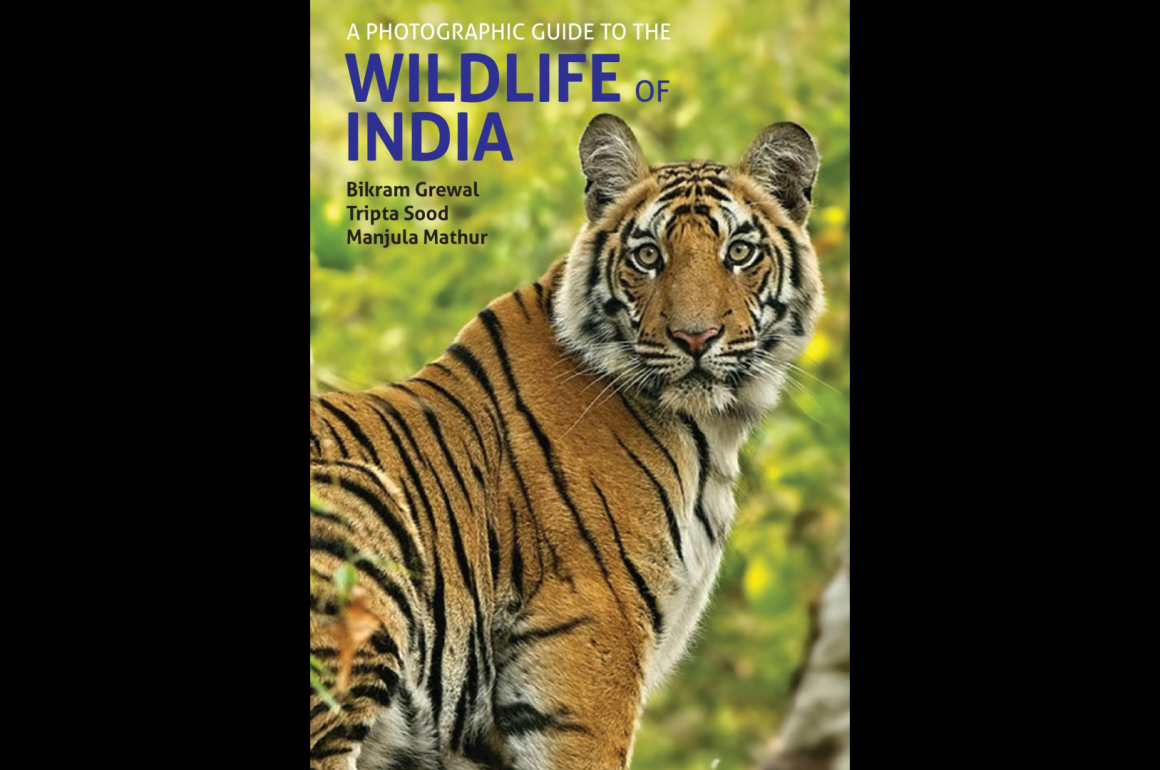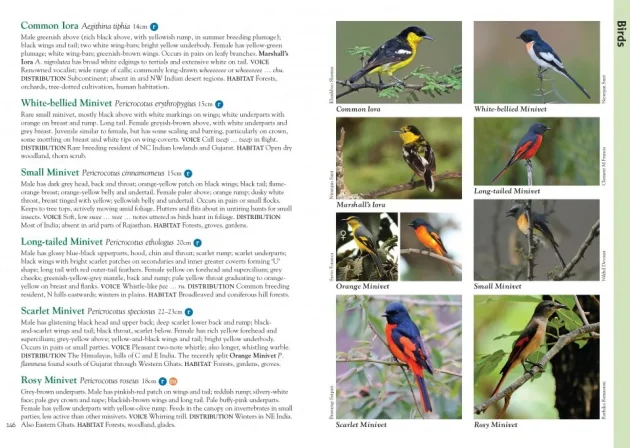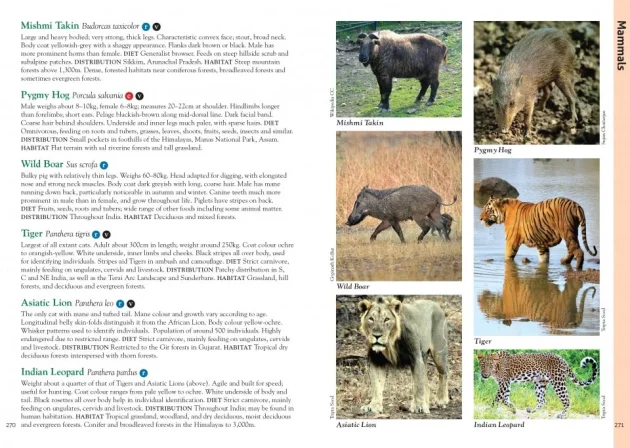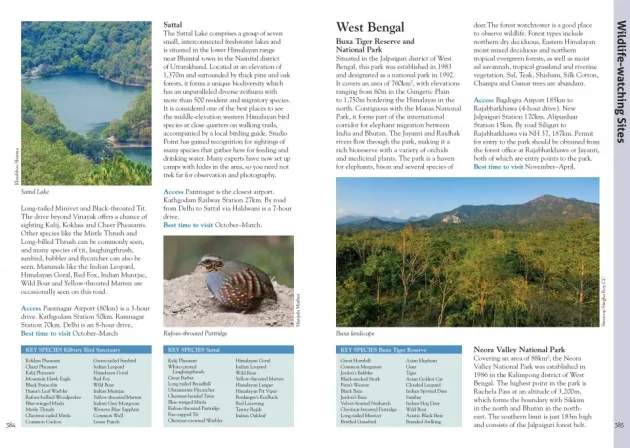
Trying not to inhale so much of the dust cloud that envelops us, I am sporting a bandana tied bank-robber style. A winding track through dense woodlands takes us to the Telia Lake in the southeast of the Tadoba Tiger Reserve in Maharashtra. Our guide is standing on his seat, scanning the area with binoculars. All of a sudden, in a hushed voice he says one word only: “Tigers!” Somewhere at the far shore of the lake, lies one Bengal Tiger (more).
Some years later, I hold ‘A Photographic Guide to the Wildlife of India’ by Bikram Grewal, Tripta Sood and Manjula Mathur. This 400 pages multi-taxon photographic guide describes 984 species from all 26 states, including the Andaman and Nicobar Islands. It begins with a 15 pages overview of India’s climate and geography, its wildlife habitats, threats to wildlife, extreme rarities and how to enjoy the forests. That chapter is an unusual and somewhat more personal view, describing the “sense of spiritual regeneration and uplift that no religious beliefs and dogmas can give to their followers.”
The next one, how to behave in the forest, describes the rules of engagement. E.g., in tiger reserves you are not allowed to leave your car anywhere but the ranger stations and the official long-drop loos. Bush loos are not allowed for the risk they involve – local statistics show that tigers more commonly take squatting women! I remember one such long-drop loo that smelled horrible, yet, I was about to enter when the locals advised me: No, go behind the building. All guides and visitors, both local and foreign, respect these rules, all but the Forestry Service managers who are running the parks. Once I observed those managers climbing the roof and walking around their 4×4 to get a better photographic position for the Tiger in the grass in front of them. I was there before they arrived and knew that there was another Tiger in the forest behind them. If that Tiger was provoked to attack anyone, it would likely end up euthanized – for behaving like a Tiger!

The main part of the book contains concise species descriptions, mostly six species per double spread with text on the left and images on the right, of 678 birds (practically half of all the birds recorded in India), 114 mammals (almost one third), 72 butterflies and other insects, 66 reptiles, and 54 trees and flowers; each one accompanied by a photograph. While the photos are of high quality, in many cases one photo is insufficient to ID the species (especially trees and many a songbird). There are no range maps. Species distribution is described in the text, e.g. for the aforementioned Tiger it says: Patchy distribution in S, C and NE India, as well as the Terai Arc Landscape and Sunderbans.

The book concludes with a 34 pages section on wildlife watching in the national parks and wildlife sanctuaries which present the best chance of seeing many of these species described. Park descriptions are very concise, but they give you an idea of the size of the park and its dominant habitats, key species to look out for (usually about 30 species, one third of them birds), access and the best time to visit. At the end there are separate indexes for birds, mammals, reptiles, insects, and trees and shrubs.

The size and weight of this guide is moderate and manageable (I travelled with heavier bird guides). My only objection is the maps, or rather, the lack of them. The book starts with one small national parks map of entire India that doesn’t even show all the parks described later. And chapters on geography, habitats and national parks could really use maps to help you get your bearings.
Other than that, ‘A Photographic Guide to the Wildlife of India’ is a well thought out, well written and beautifully illustrated book that can really help you plan your wildlife watching or photography tour of India, as well as to ID the easier species in the field.
‘A Photographic Guide to the Wildlife of India’
by Bikram Grewal, Tripta Sood and Manjula Mathur
• Published by John Beaufoy Publishing, June 2022
• 192 x 135 mm
• 400 pages
• approx. 1000 photographs
• ISBN 978-1-913679-01-9













“Trying not to inhale so much of the dust cloud…” An activity that I have become very familiar with lately! LOL! 😉 Nice review!
Thanks, Michael